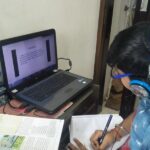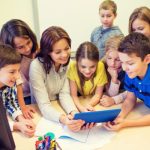Cross-curricular collaboration helps students see links between subjects. It allows creative teamwork and deeper learning. When subjects connect, understanding becomes broader. Students notice links between ideas and apply skills in new ways. Teachers guide learners through shared projects. A group can explore math with art or science with writing. This mix of fields builds curiosity. It also strengthens teamwork. Students learn to respect different strengths. They share views and connect knowledge. Such projects also improve problem solving. Partnerships across subjects make learning more active. The experience becomes real and lasting.
Blending Math and Art in Projects
Math and art can merge in creative ways. A geometry lesson can meet drawing. Shapes become designs. Patterns form through careful planning. Students can create murals that reflect balance. Measurements support proportions in artwork. The work becomes both precise and beautiful. Collaboration between these fields unites logic with imagination. Every student contributes ideas. The result is a mix of structure and color. Art gives math life and emotion. Math gives art order and clarity. The final display shows teamwork and skill. The classroom turns into a shared studio of ideas. The collaborative activities for middle school there comes up useful here.
Linking Science and Language Arts
Science and language arts can create strong links. A science experiment becomes a story. Students write about discovery. They describe processes in simple words. They record reactions and results. Writing helps explain the meaning of data. Language gives science a personal voice. Students learn to express findings clearly. A report can turn into a short book. Each learner gains both accuracy and creativity. Science gains depth through narrative. Writing gains detail through observation. The mix forms clear and memorable lessons. Meaning grows through both study and storytelling.
Connecting History and Music
History and music can work together. Students can study songs from a time period. They can learn about events around those songs. This link gives insight and emotion. Music becomes a record of human life. The rhythm tells stories of change. Historical facts gain melody and tone. Every tune shows culture and feeling. Students can perform songs and discuss meanings. They reflect on themes of unity and hope. The project deepens empathy and understanding. History becomes more than a list of dates. Music carries the voices of the past. The learning experience becomes alive.
Designing Team Projects Across Fields
Teachers can design team projects across many areas. A project can unite math, art, science, and writing. Groups can build models that explain ideas. They can write reports to describe steps. They can measure and paint to add meaning. The mix of methods keeps each learner engaged. Teamwork grows through shared goals. Cooperation builds communication and trust. Each subject adds a different view. The project becomes a full learning circle. Students think critically and act creatively. The process turns study into discovery. The power of learning grows through collaboration.















